I don’t know about you, but choosing garden seeds and plants every year is ridiculously enjoyable for me. I could sit and flip through seed catalogs for hours, and I spend an inordinate amount of time browsing seed stands when they pop up at stores in spring. Weird? Maybe, but hey, there are stranger hobbies! I know there are many other plant geeks out there whose excitement over selecting garden plants rivals that of a child on Christmas eve.
As enjoyable as it is, choosing seeds can be overwhelmingly confusing these days with the varieties available and concern about GMOs. Generations ago, seeds from old, trusted plant varieties were saved every year and shared with friends and family, passed down like treasured heirlooms. These days, it’s more common for most gardeners – especially beginners and those who like to try different varieties each year – to buy seeds or starter plants from stores or nurseries. But this seemingly simple task has become arduous to label-conscious consumers; seed packets and plant labels are almost as confusing as food labels.
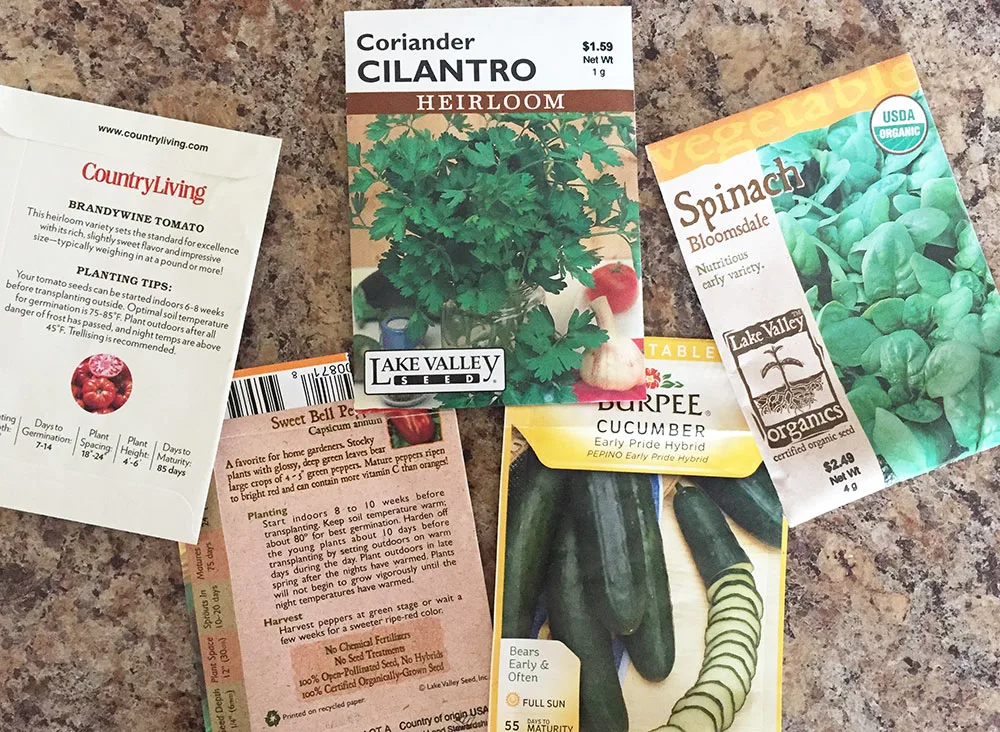
The photo above shows a random selection of packets I pulled out of my seed stash. Looking at the labels, you can see what I mean about the complexity and variety of terms. Hybrid or Heirloom? Organic? Open pollinated? What does it all mean, and which seeds are the best? Following is a quick guide to help you understand the different types of seeds.
The dirt on seeds: differences between heirlooms, organics, and hybrids
Organic seeds
There is a sense of trust and credibility most of us inherently associate with the USDA organic label when we see it. Clever packaging along with that stamp on the label draw many gardeners to organic seeds. When it comes to seeds, however, the organic label simply refers to the way the seed-producing plant was grown.
Purchasing organic seeds does support organic growing practices, but beyond that, the plants you grow from those seeds are only organic if you grow them organically. Obviously, an organically-produced seed is desirable over a non-organic one if you have both available to choose from, but don’t feel too discouraged if your seeds don’t have the certified organic stamp. You can still grow an organic garden, regardless of how the plant that produced your seeds was grown.
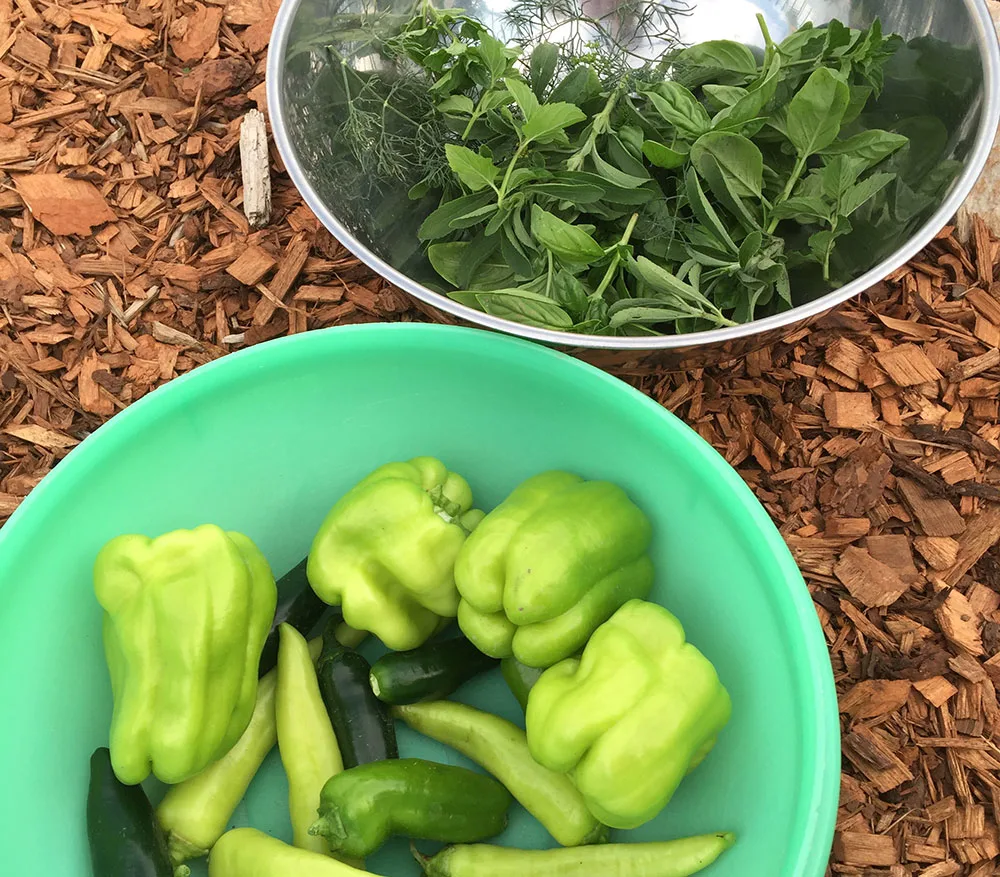
Heirloom herbs and hybrid peppers
Beyond the organic label, the important factors to note when choosing seeds are whether they are heirloom or hybrid plants. There are benefits and drawbacks to both.
Heirloom seeds
Heirloom seeds are typically from old, and sometimes rare, plant varieties that have been passed down through generations without much modification. While there may be some very slight changes in the plants over the years, particularly because people tend to save seeds only from their most desirable plants, these varieties have remained true to form for many, many years.
A key characteristic of heirloom plants is that they are open-pollinated, meaning they are pollinated by natural means: bees, butterflies, birds, wind, etc. The importance of this comes into play if you plan on saving your own seeds to grow year after year. Seeds from heirloom, open-pollinated plants will produce the same plant every year, which is not the case with hybrids.
This summary from Annie’s Heirloom Seeds perfectly illustrates the virtues of heirloom plants:
Heirloom varieties are at least 50 years old. You can save your own seeds year after year and share them. But it’s more than that. It’s about a variety withstanding the test of time. It’s survived, seen diseases and different weather conditions. It’s developed resistances and hardiness through the seasons. It’s old and wise. It’s about varieties that were cherished by people who loved their gardens. It’s not about looking good on a store shelf or profitability. It’s about amazing flavor, nutrition, and a great gardening experience.
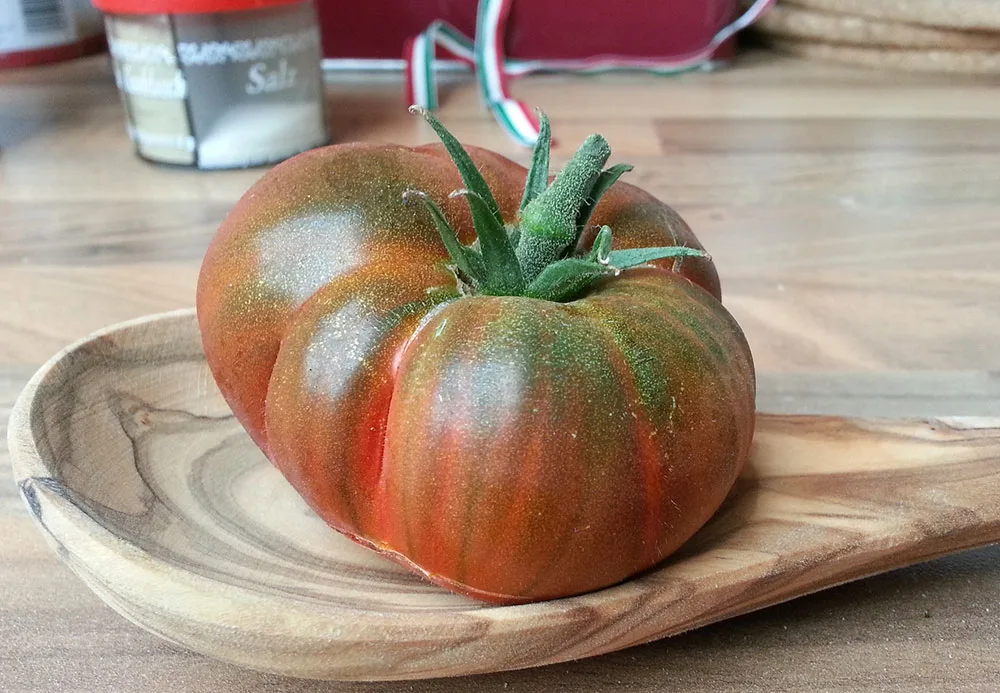
Brandywine heirloom tomato
You’ll likely find a nice variety of heirloom seeds or plants at your local nurseries or stores when planting season rolls around. Read the label to know for sure, as most heirlooms are labeled as such somewhere on the packet.
Heirloom seed catalogs are a fun way to get a glimpse of the huge variety of heirlooms available, and to obtain seeds from interesting and rare plant varieties. There are several great heirloom seed companies that provide free catalogs. Two of my favorites are Baker Creek Heirloom Seeds and Annie’s Heirloom Seeds. Another great source is Seed Savers. One of the coolest things about these catalogs is that many of the plants have stories behind them if you’re interested in knowing how old a plant is or how it came to be.
Hybrid seeds
Hybrid plants (also commonly called F1 plants) are deliberate crosses between two different plant varieties. Hybridization is done to improve food crops by combining the most desirable characteristics from two parent plants. Most hybrids have specific traits they were bred for: early production, disease resistance, or high yield, for example. Hybrid plants are hand-pollinated by breeders to ensure that the exact desired cross is achieved.
If you save and plant seeds from a hybrid plant, you won’t get the same plant as the original when the plants grow; you’ll get one of the parent plants. This is one of the downsides to hybrids, but their benefits often outweigh the inconvenience of having to buy the seeds for your favorite hybrids every year.
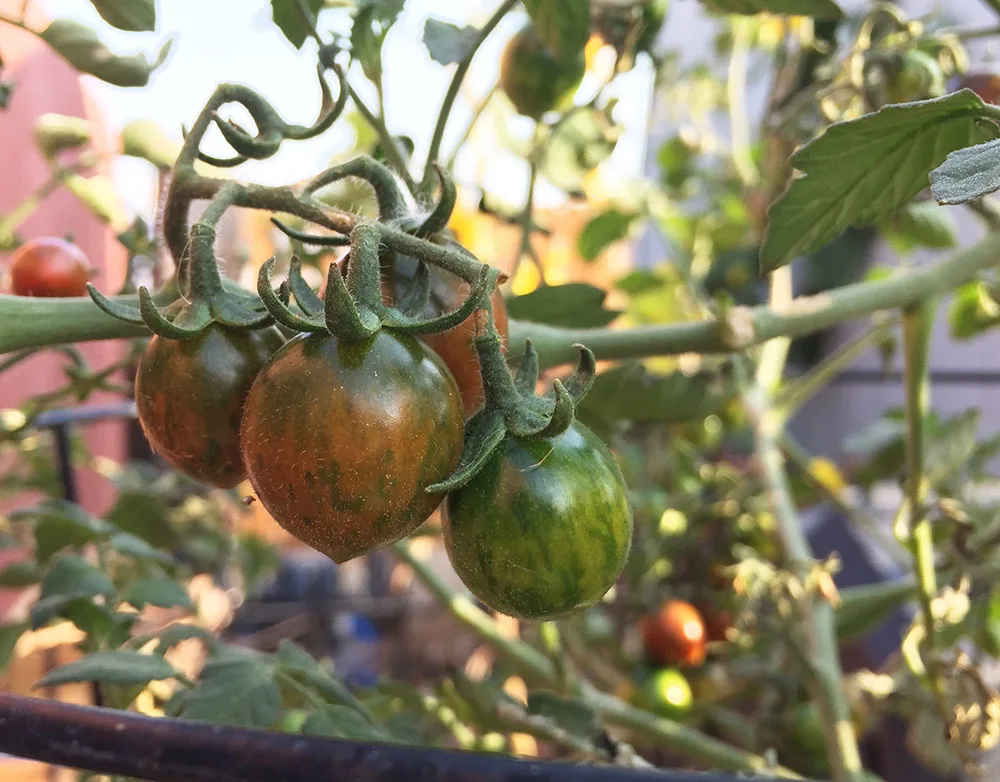
Chocolate Sprinkles hybrid cherry tomato
This description from Burpee seeds nicely details what hybrids are and how they are created:
…a hybrid is created when two different varieties of plants in the same genus—like two tomatoes or two peppers—are combined in the field. This is achieved by dusting the pollen of one variety—like, say the legendarily delicious Brandywine tomato—onto the female flowers of another variety of tomato that has different desirable traits, like better disease resistance or the tendency to produce more of those tasty fruits. The two original ‘parent’ plants will remain the same over the course of the growing season, but the SEEDS inside the fruits they produce will deliver the new, hybrid, variety when they are collected, dried, packaged, sown and grown the following year. Pretty much exactly what happens when we humans have children. (Often with equally unpredictable results.)
Are hybrids GMOs?
There is a big misconception that hybrid plants are GMO, which is not the case. Hybrids are not GMO; they are carefully cross-pollinated in a field or greenhouse setting. Genetically modified plants, on the other hand, are created in labs by changing a plant’s DNA.
According to the Non-GMO Project, “this experimental technology merges DNA from different species, creating unstable combinations of plant, animal, bacterial and viral genes that cannot occur in nature or in traditional crossbreeding”.
If the origin of your seeds is a concern for you, check with the seed company to find out more. The majority of seeds sold to consumers are not GMO, as genetically modified seeds are created specifically for commercial farming. This may not always be the case, however, so your best bet is to know and trust the company you buy seeds from. Most reputable seed suppliers are happy to provide information about their products and practices.
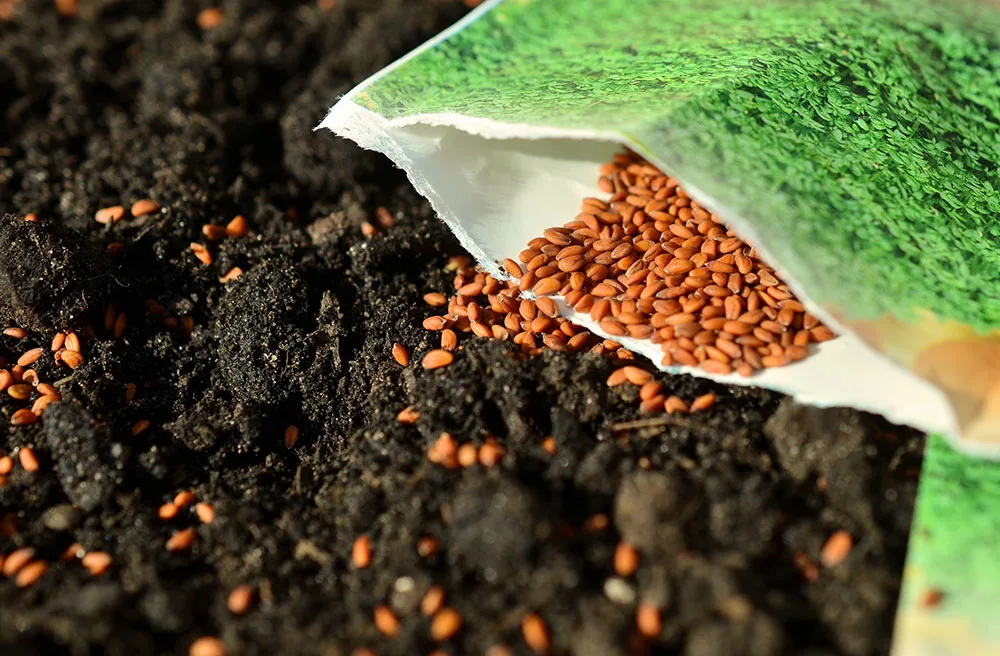
Summing it all up, which seeds are best?
Ultimately, the seeds you choose will depend on your personal preferences and food requirements. If you want to grow a large amount of food in a small space, hybrids might be the way to go, as there are many hybrid plants specifically created to produce large yields. If you would like to save seeds year after year to regrow or share, heirlooms and open-pollinated seeds will be more beneficial to you.
I personally gravitate toward heirlooms, simply because I like the older varieties. Brandywine tomatoes and Rainbow chard are just two of the must-have heirlooms in my garden every year. Also, I love the idea of preserving heirloom plants to continue passing seeds on to future generations.
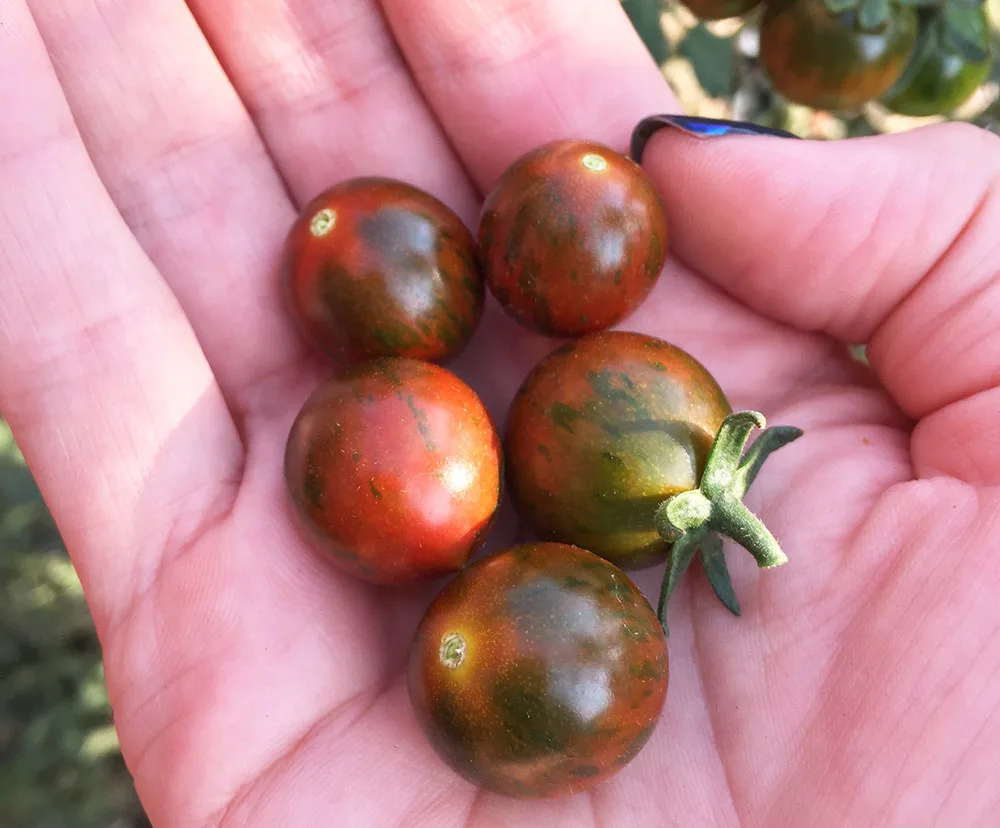
Chocolate Sprinkles cherry tomato
Though heirlooms are my default, there are some hybrids I have come to love and seek out every year. One of my favorites is a variety of cherry tomato called Chocolate Sprinkles. I have grown these for several years now because the plants are hardy and easy to grow in my climate, they produce continuously (as in constantly!), and my garden-grazing kids absolutely love them. I haven’t found another cherry tomato variety yet that produces as abundantly as this one.
Variety is the spice of life (or the garden), so if you don’t already have tried and true garden favorites, try selecting a mix of heirlooms and hybrids to see what plants work best for you. You’ll find, over time, that you are drawn to specific plants over others for different reasons. Enjoy the discovery process, as experiencing new plants is a big part of the fun!
Do you have favorite heirloom garden plants? Or hybrids you can’t live without? Let us know in the comments!
